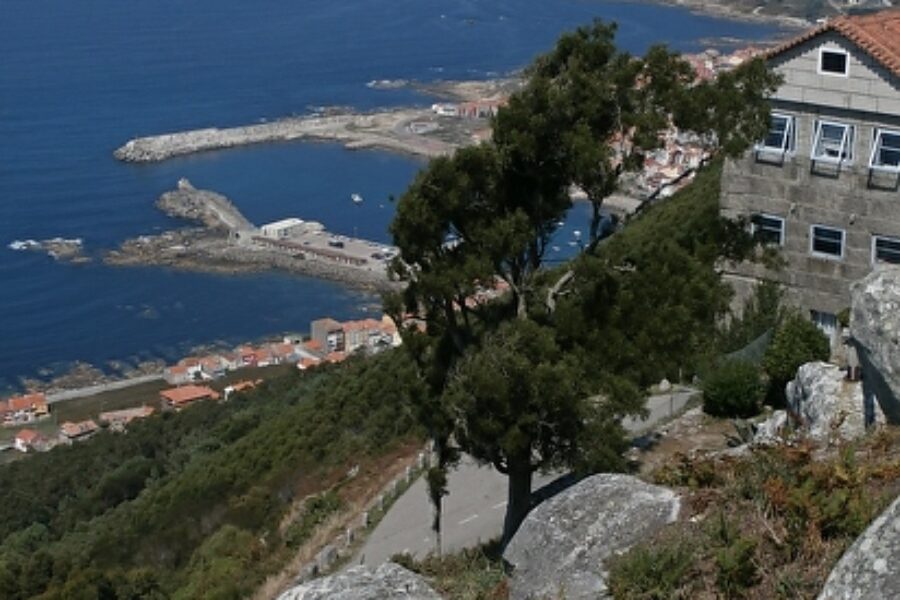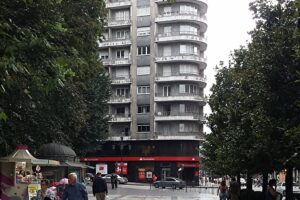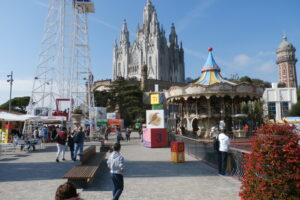A Guarda
Driving along the Galician Coast what I have been hoping for is — lunch. Not just any lunch, but lunch at a quaint little café on the water in an even quainter fishing village.
But Michael keeps driving.
I keep quiet.
The fishing villages race by, or perhaps we race by the villages. As Caderias. Faro Silleiro. As Marinas. Pedra Rubia. Barcelos. Toiberde. O Mato Vello. Oia. A Rĩna. Portecelo. The route we take is barely 31 km long.
“Don’t cross the river,” I say, “if you do we will be in Portugal.”
“Do you want to see this castle?” Michael asks.
What castle? I wonder.
On the Galician Coast close to the inlet of the Rio Mĩno, in the Spanish border town of A Guarda, Michael follows signs to a historical monument—we guess a castle because the sign says Castro. It sounds like it could be the word castle in another language. The ascent is gradual at first, and then the road turns into swirling curves and switchbacks. This road is so steep my insides begin to quiver.
Where are we? And why are we?

The Galician Coast at the Mouth of the Rio Mino

Portugal is beyond our reach across the inlet of the Rio Mĩno.
Castro de Santa Trega
We crest the last rise to find a parking lot for buses; with buses, crowds of people, and vendors in market stalls selling their wares—all of Celtic design. Squeezing into the last parking space available we still don’t know why we are — or where we are — and what is so special as to have tour buses make the treacherous climb. There is no castle.
We walk into the restaurant looking for lunch, finding a bar serving only Cervesa, wine, and chips. We snag a table on the small balcony, ordering vino, each of us nibbling on our own bag of Lays; all as an excuse to sit and inhale the view below.
Our chips consumed and not a drop of vino blanco left there is nothing to do but climb to the top of the mountain.
“Shall we go?”
Why are there always mountains, hills, and stairs…with no handrails? I hold my breath, taking the first step.


Reading, I discover we are at the site of Castro de Santa Trega, a place where the Celtic tribes built one of their many colonies in Galacia and Asturias before migrating to Ireland. But where are the ruins? Not visible anywhere. I pick my way carefully among the rocks, finding a safe place to sit while Michael finishes his exploration of this treacherous seeming mountaintop.

Exploring the Ruins
Back in the car, descending slowly, we see the ruins of a Castro settlement.
“Michael we have to STOP!”
Always trying to accommodate me, Michael finds a flat space at the apex of a hairpin turn and drives the car onto it, safely out of harm’s way—we hope.

Thanks to the archeological museum in Oveido I know a little a bit about the ancient Celts and their Castro settlements— the one on this mountain, discovered in1913, tumbles down the side, taking root wherever a flat surface can be found. We are at the topmost site.
I always wanted to be an archeologist—discovering, restoring, preserving—but now I am grateful I can enjoy the fruits of their labors instead of being the one that dug out these ruins a spoonful of dirt at a time.




Monasterio de Santa Maria de Oia
On our morning trip down the coast, I saw a very old church facing the sea. A jumble of major and minor buildings stacked haphazardly together like blocks. Old stone near water. We have to make the trek down the hill, through the tunnel. Michael accommodates my whims one more time. We wind our way down narrow lanes till at last, we are beside it. There is even a parking lot.

Adjacent to the old monastery, the entrance is barred to us. Michael wanders off. Of course — Michael wanders off. I sit on the lichen-encrusted stone wall and wait. I see him from a distance. He waves. I walk along the water’s edge joining him on a bench facing the church.



A Tapas Lunch
We stumble on a tiny restaurant catering to pilgrims on the Camino trail from Portugal. We order a light lunch—three tapas.


The Spanish interpretation of small plates is very different from ours. We are unable to finish the decadent indulgence—three types of croquetas (cheese, spinach and black bean), tortilla Espanol, Patatas con ali oli—and point our toes in the direction of the car.
Cape Finisterre Lighthouse
Lighthouses are always on the agenda, and passing one this morning sitting high on a bluff overlooking this seaside highway curling along the lip of the Atlantic’s surf, we search for it again. Making a sharp turn to our right, we begin the climb. A series of old WW II gun turrets scale the hill beside us.
Parked at a slant, I consider sitting in the car beside the lighthouse while Michael snaps pictures. Before opening his door he tells me, “Jump out if the car starts to roll.”
Of course, he wanders off, down the hill, beyond my view.


We could and probably should do the obvious — return the way we came. But the obvious has never been our MO. Our Tom-Tom (we call it Gladys) wants us to “turn around when possible.”
We ignore Gladys.


Continuing our ascent, my phone in hand checking Google maps we take a dead end road leading to a deserted WW II fort; being forced this time to backtrack. We continue down the opposite side of the mountain crawling along tiny lanes, scraping blackberry brambles as we go, with me promising Michael if he just listens to me I’ll get us back to the highway.
Back at our temporary-temporary casa, we take a siesta till it is time for dinner— never served before 8:30 p.m.
It is a long nap.










Leave a Reply
Your email is safe with us.